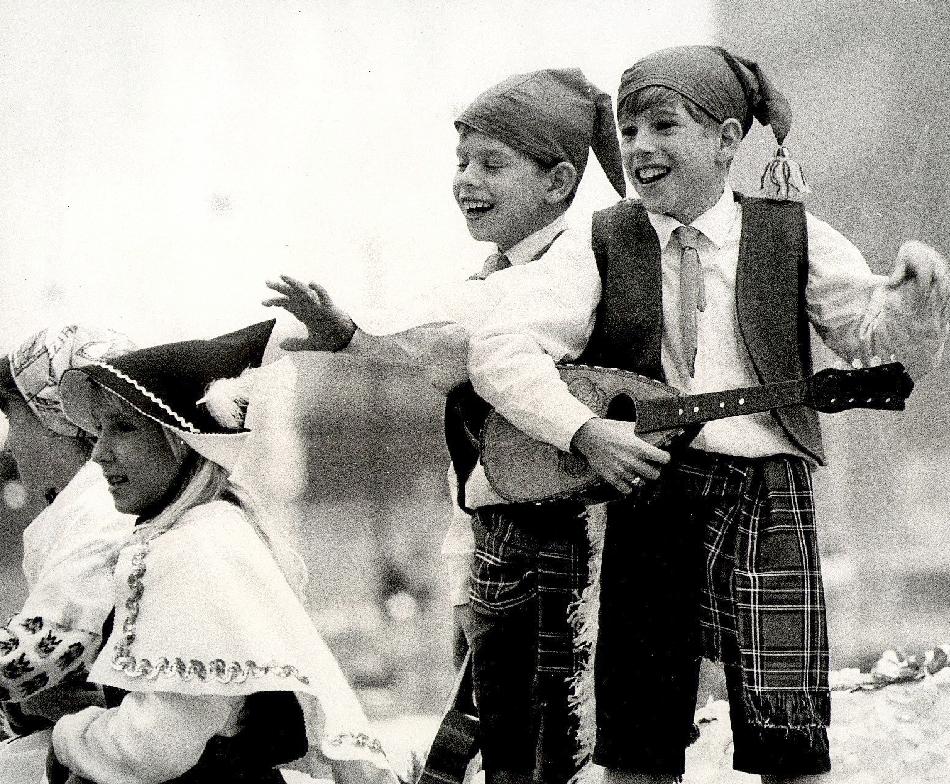
American Immigration: Italy--Entering the Mainstream

Figure 1.--Here we see Italian-American children participating in the 1969 Chicago Columbus Day Parade. These parades became an American fixture by the turn-of-the 20th century. Many cities organized parades and other cel;ebrations, Columbus Day became a national holiday (1934). The press caption here read, "60 floats honor Columbus: Brown-eyed Cheryl Gliosci, 17, reigns as queen of Chicago's Columbus Day parade Monday. Youngsters at right rode one of the 60 floats that moved down State Street along with 50 bands and a number of smart-stepping dignitaries including the mayor and governor." The fifference between this parade and early parades is that many of the children on the floats and spectators watching the parade came into the city from the suburbs.
|
|
Through World War II a substantial part of the Italian-American population lived in the mjor cities of the North-east and Mid-West. The many Little Italies were an important part of mny big cities. Italian Americans has become an important part of th merican ethnic mix, but many Italian-meicans were not yet fully assimilated into the american minstream. Not only were they concentrated in the major cities, but they had not yet broken into the professional and corporate America in a big way. Relatively few Itlian-Americans attended university which is of course was a virtual guaratee for success. Most Italians were blue-collar workers. All of this begn to change with World War wjich mixed people together as never before. But the New Deal empowerment of labor unions and then World War II strongly promoted assimilation and the entrance into the mainstream. The G.I. Bill opened up university education to many who could have never afforded it before. And the post-War boom helped increase wages to the point that many working-class American could enter the middle class. We see Italian Americans joining the migration from the inner-cities to the suburbs. And we see the Italian-American entry into the American mainstream in many ways. Pizza is no longer seen as Italian fare, but an American stple, just look at the frozen food aisle of any grocery store. And in the process pizza changed as many Americans tourists were have found to their surrise when ordring pizza in Italy. Relatively few Italian-Americans now speak Italian. Italian voting behavior is a reflection of this. Italians have become one of the most-Republican of the various ethnic groups, although here it is difficult to separate ethnic and religious (Catholic) influnces.
CIH

Navigate the Children in History Website:
[Return to the Main Italian immigration page]
[Return to the Main U.S. immigration page]
[About Us]
[Introduction]
[Biographies]
[Chronology]
[Climatology]
[Clothing]
[Disease and Health]
[Economics]
[Freedom]
[Geography]
[History]
[Human Nature]
[Ideology]
[Law]
[Nationalism]
[Presidents]
[Religion]
[Royalty]
[Science]
[Social Class]
[Bibliographies]
[Contributions]
[FAQs]
[Glossaries]
[Images]
[Links]
[Registration]
[Tools]
[Children in History Home]
Created: 9:32 AM 1/20/2017
Last updated: 9:32 AM 1/20/2017



